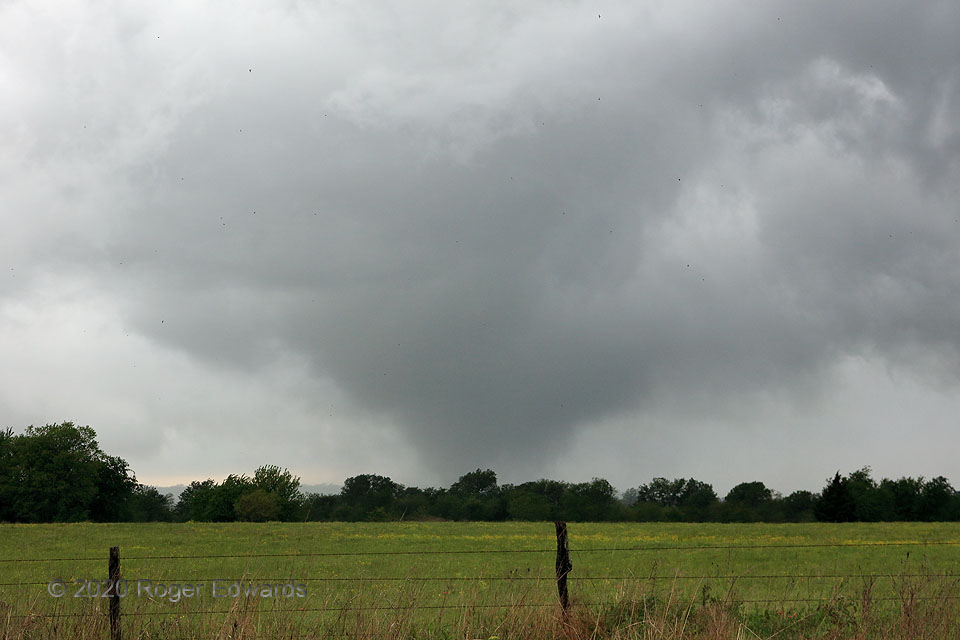[Part 1 of 4] Just a shade under four years earlier, I came home from a night shift, went to bed, and told my wife, Elke: “Wake me up if there’s a supercell within a couple counties of us, west of I-35”. There was, she did, and after a quick look at satellite, surface chart and radar, I threw on clothes and bolted off. While unable to get down the Interstate in time for the first of a tornadic storm’s production, I went southeast then south to witness the next, from a wildflower-laden clearing, directly in its eastward path. I evacuated out of the way after starting to hear it, then watched the vortex cross the road with a roaring cascade of rain and debris not far to the north. On this day, the very same basic story unfolded, albeit slightly farther from home. Driving through driving rain at times, I had a sense of deja vu the whole way down, having lived this script before. This tornado, emerging behind the rear-flank gust front from a smaller, more deeply occluded mesocyclone, was nowhere nearly as large or violent as the 2016 Sulphur wedge, and that’s a good thing! The specks in this photo aren’t camera noise nor sensor dust; they’re real: birds by the dozens, desperately trying to escape the oncoming menace by flying south, into the strengthening mesocyclonic wind. I hope they all succeeded. [Part 2]
1 N Wapanucka OK (22 Apr 20) Looking W
34.3961, -96.4246
